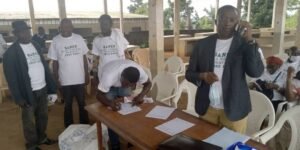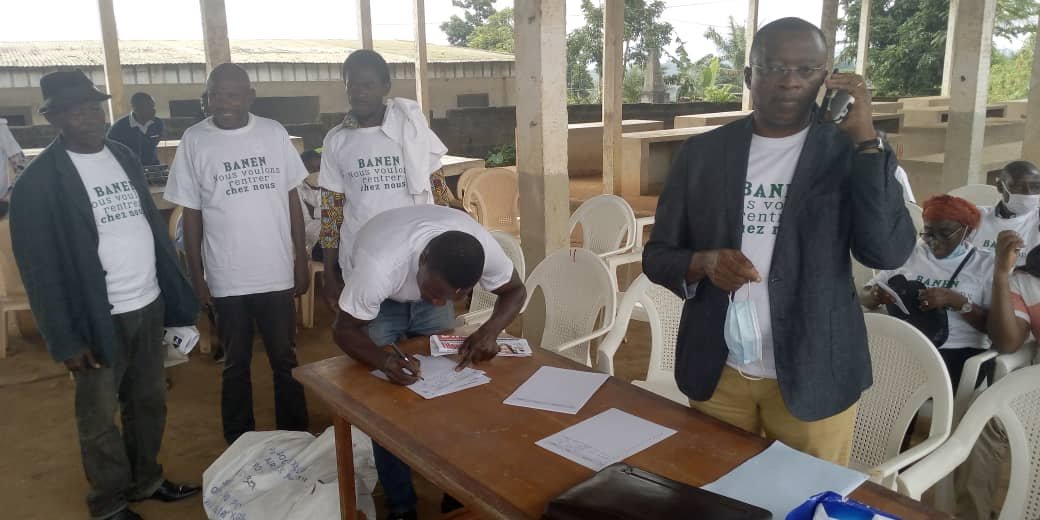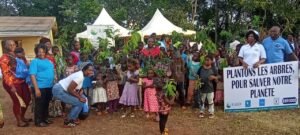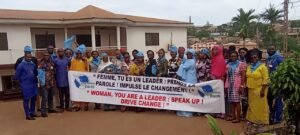
Samuel Moth, Member of Parliament at the national assembly of Cameroon has initiated an explanatory and sensitization campaign related to the Ebo forest in the Nkam division, littoral region of the country as part of activities defined in his road map.
The newly elected Member of Parliament from the ruling Cameroon people’s democratic movement (CPDM) party, has engaged since mid-July a series of discussions with populations of his constituency. After discussions held in Douala, the MP gathered in Yingui, Nkam division various stakeholders and communities who are concerned in the process of conservation of the Ebo forest massif.
This explanatory campaign undertaken by Honorable Samuel Moth has been challenging despite the fact that many issues surrounding the Ebo forest project were highlighted but communities do not really master the stakes of the two variants of conservation.
Stakes and Challenges
The process of classifying the forest of Ebo as a national park was initiated by the nature of the public notice number 0219 / AP / MINFOF / SG / DFAP of May 3, 2006 bearing a declaration of part of the Ebo forest of public utility, then completed in 2012. This file did not get the outcome expected by the ministry of forestry and wildlife (MINFOF), because of the non-adherence of a large part of the population to the park creation project, despite massive awareness campaigns carried out in the field and support from conservation partners like WWF and WCS had been ineffective.
The guarantees as well as the expectations requested by these populations did not meet the required standards. The process was thus sealed for lack of consensus and the classification of this forest had been made impossible due to the existence of many villages within the massif.
As underscored, forest management units (FMU) is an aspect of sustainable forest management because it is based on a management plan. Concessionaires pay taxes to the local developer, create roads and economic infrastructure.
According to reports, from 2012 to 2019, exploitation of forest resources in this area has increased. Activities linked to saw milling of wood as well as the illegal exploitation of wood which do not yield anything to the state yet to the populations, have led the government to change direction to meet the expectations of these populations. This new configuration has tried to reconcile the imperatives of conservation and those of development which involves among others; the creation of two forestry management units; the recognition of the importance of the bio-diversity of the area by the creation of conservation tanks inside the FMUs; the enhancement, with a view to lake observation, of a residual portion of the surface area of more than 10,000 hectares located in the Mbam and Inoubou division, linked to the various enclaves by migration corridors of wild animals . This space could also be classified as a protected area.
Benefits of participatory management
Worthy to recall, the state does not impose anything on communities. They collect and freely manage the income from forestry and wildlife activities. Since 2005, populations living near the forest management units have received nearly 160 billion Francs CFA as annual forestry fees and 4 billion Francs CFA as leasing taxes. Taking into account income from communal and community forests as well as from areas of community-managed hunting interest are other sources of substantial income that should allow communities to flourish.
It has been outlined that classified forest management units will have a management plan, an environmental impact study accompanied by consensual specifications as provided for by the forestry law.
This prospect will allow the private sector to create wealth and offers to the state, councils and neighbouring communities, opportunities in terms of income and job creation. In addition, the populations could negotiate other socio-economic benefits such as construction of roads, boreholes, schools, health centers just to name this few, with the concessionaire companies of the FMUs.
According to relevant estimates, the setting up of FMUs should also make it possible to finance the developments in the Douala-Edea wildlife reserve and the wildlife conservation areas that will be created within the two forest management units by the repayment of part of the profits from their exploitation.

However, the Banen communities who are part of yingui have express the will to reoccupy their region abandoned due to local and ethnic war have chosen the FMU. They wish and dream that their two Banen communities in the Nkam and Mbam and Inoubou divisions.
From reports, the Ebo forest is located approximately 60 kilometres from Douala in the Littoral region. It is the most functionally intact ecosystem in the Gulf of Guinea biodiversity hotspot. The Ebo forest is home to more than 40 communities which give this space and resources considerable cultural, customary and economic importance. The biodiversity of this rich forest is mainly threatened by poaching and wildlife trafficking, but also by illegal logging and the establishment of a large oil palm plantation in the buffer zone to the northwest. As noted in other areas, these logging operations directly threaten the exceptional biodiversity sheltered by this forest. They are also likely to exacerbate pressures on species and their habitats by the migration of low-paid workers into the region who may seek to supplement their meager incomes with hunting and subsistence farming.
Elise Kenimbeni





